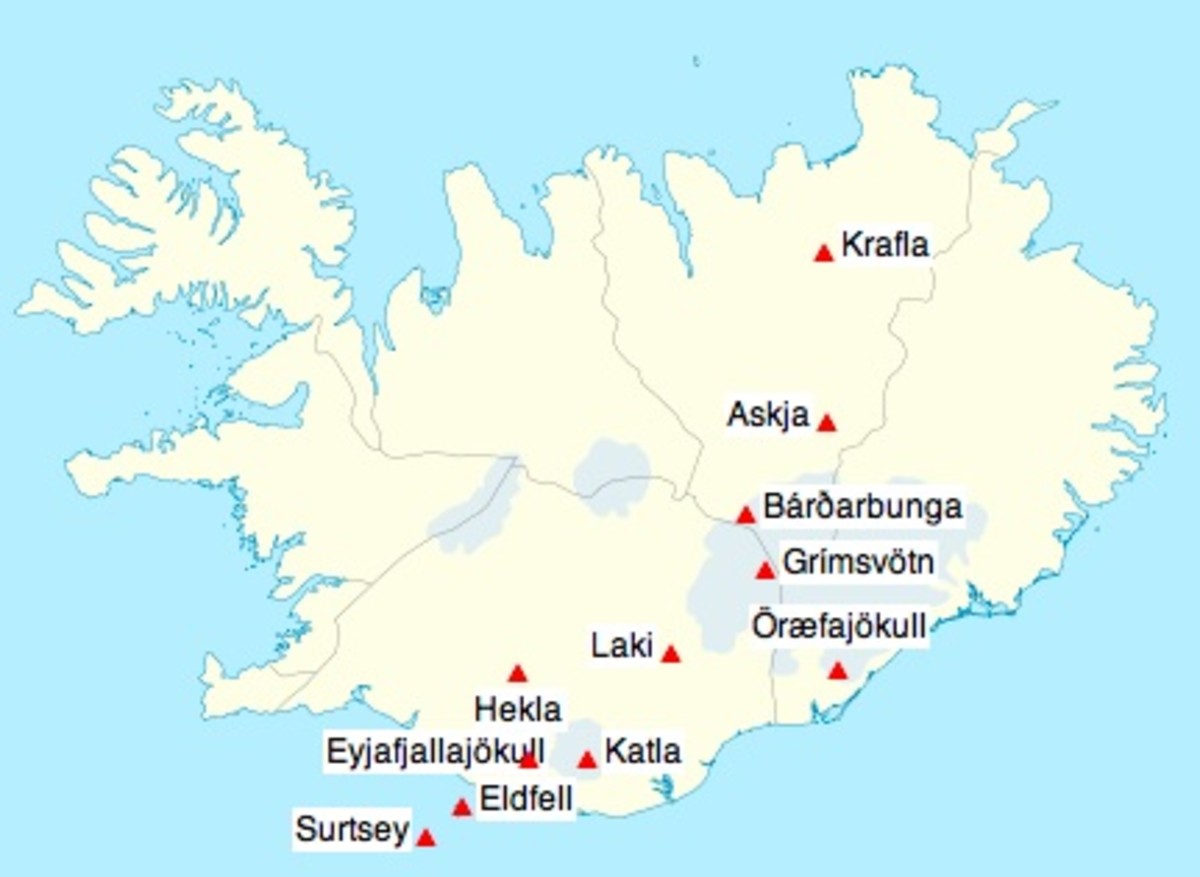Earthquake Weather Report for October 2014
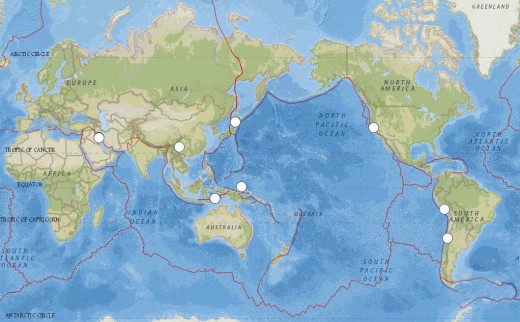
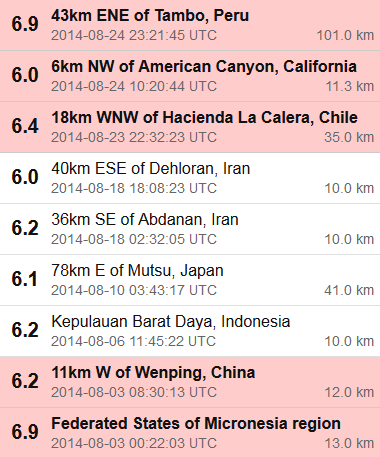

In my August Weather Update (posted just after the activity of August 3, 2014), I felt that, although the events were as much as 12 hours outside of a window based on astro-aspect values, that the 6.9 magnitude earthquake was not just a random event and that it most likely was tied to astrology in some way. At the time I was in the middle of updating my algorithms that determine peaks within windows. When I was done on August 12, there was a peak at the time of the August 3 quakes (I hadn't modified the algorithms to fit that specific quake).
The first of these temblors (centerd in the East Caroline Islands, Micronesia) was significant because its magnitude was at least 6.8. The other (eight hours later) was a 6.2 magnitude event in Yunnan, China but, due to its epicenter being very close to a populated area, and the direction of the shock being nearly horizontal, the result was many houses being thrown from their foundations and over 600 fatalities.
As far as significant earthquakes are concerned, things remained quiet for three weeks until a 6.1 magnitude earthquake occurred in American Canyon and Napa, California. Again, the direction of the main shock was close to horizontal, there was about half of a billion dollars in damage, and one fatality. Thirteen hours later there was a 6.8 magnitude quake in a sparsely populated area of central Peru (no deaths or widespread damage was reported from the over 50 mile deep quake).
Although, things have been very quiet for over three weeks now, with a recent solar storm ejecting a blast of particles our way, nearly missing the earth on September 13, things may soon change. August was a bit below average, and so far September is moving slower still. But, if it doesn't pick up sooner, there should be an uptick in activity during the last four days of September, and October 2014 looks like it should be more active than an average month. With the exception of the record setting significant seismic activity during April 2014, the frequency of worldwide events has been no better than average since August 2013.
As I have stated before, when seismic events are at an average level or less, astrology doesn't appear to do much better at predicting than chance. In April 2014 however, when there were four times more 6.8 magnitude or larger earthquakes than the statistical average, every one of those quakes was inside of a window as defined by astrology. In August, worldwide activity was not only just below average, but astrology did not do any better than chance.
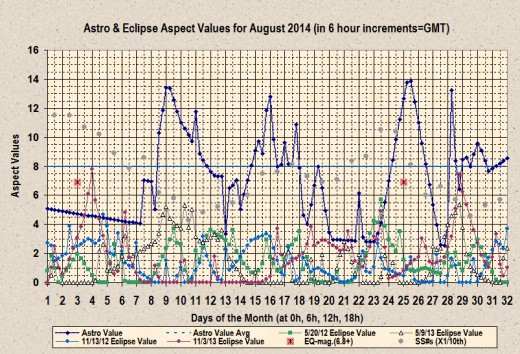
If solar eclipses have anything to add to how often or when or where earthquakes might occur, only the four main annular or total eclipses from 2012-2013 play a role in the unfolding of earthquakes for the next 1.5 years. Not until the total solar eclipse of March 9, 2016, will any new eclipse be a factor in the timing and location of earthquakes to come.
Another forecaster on the net, one Britton LaRoche from Texas, also uses eclipses primarily to determine seismic window periods. However, during a recent Cosmos episode on television, he learned that Jupiter once influenced our orbit so significantly that it caused our planet to enter into and then exit from an ice age. He thus feels that he should include Jupiter's cycles of oppositions and conjunctions to the sun into his prediction equations.
It may not be so simple, however. He still needs to compare those orbital variables of Jupiter to past quake activity to see if he gets a correlation. I have done a bit of that and find that one should be looking at other angles besides conjunctions and oppositions. I have found that such aspects are overated when it comes to predicting earthquakes using alignments of the sun and moon (only nearly exact configurations yield any significant results). A more convincing correlation exists when the sun and moon are in a 38d45m aspect with each other. And with Jupiter and the sun, it would appear that 172d30m is the magic angle (or 7d30m shy of an opposition of 180 degrees).
Jupiter's potential influence would appear to be large due to its size, having the greatest gravitational effect in the solar system of any body other than the sun. And of course our moon has the greatest effect on us, so should be considered somehow in any formula used to forecast earthquakes. But, in a situation that would seem to defy logic, such extremely different planets, the closest to the sun, and the furthest, also have an effect on the unfolding of earthquakes on our planet.
The planet Mercury often acts like a trigger, since it moves (from our perspective) through the heavens faster than any other body besides the moon. Pluto, at times, also has an effect, such as when it is in a tight 179d17m aspect with the midpoint of the sun and moon (give or take 14 minutes of arc). However, the planets with the greatest influence appear to start with Mars, along with Mercury, the sun, and Uranus. The moon and Venus also play a role, followed by Saturn, Neptune, Pluto, and finally Jupiter. Chiron, a Centaur class of asteroid that also exhibits attributes of a comet and was only discovered a few decades ago, is actually a prime indicator of activity when it is in certain aspects with the planet Uranus.

Now it is time for the monthly Earthquake Weather Report in which we now look at the potential for significant seismic events (earthquakes of at least 6.8 magnitude) this time for October 2014. The following seismic windows are based on peaks in astro-aspect values that rise above a monthly average value. The total amount of time that they occupy in this month is 16.58 days or 53.5% of the monthly total of 31 days.
2014-10/01, 0000 UTC to 2014-10/03, 0400 UTC: China/Taiwan, Japan, Aleutians, N CA or S OR, E or S of FL, SC, N or E of Australia, Chile or Peru (52 hrs).
2014-10/03, 2000 UTC to 2014-10/04, 2100 UTC: E or S of FL, SC, China/
Taiwan, Japan, Aleutians, N CA or S OR, N or E of Australia, Chile or Peru (25 hrs).
2014-10/06, 0800 UTC to 2014-10/10, 1600 UTC: China/Taiwan, Japan, Aleutians, N CA or S OR, N or E of Australia, Chile or Peru (104 hrs).
2014-10/11, 0600 UTC to 2014-10/14, 0800 UTC: N or NE of Australia, China/
Taiwan, Japan, Aleutians, N CA or S OR (74 hrs).
2014-10/17, 1900 UTC to 2014-10/18, 1600 UTC: S or E of FL, SC (21 hrs).
2014-10/20, 0900 UTC to 2014-10/21, 0300 UTC: N or E of Australia, Chile or Peru (18 hrs).
2014-10/22, 1900 UTC to 2014-10/27, 0300 UTC: N or E of Australia, Chile or Peru, S or E of FL, SC, China/Taiwan, Japan, Aleutians, N CA or S OR (104 hrs).
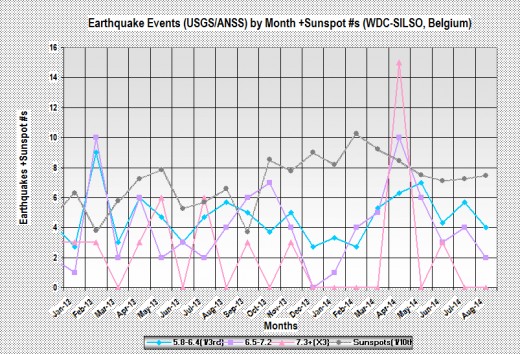
© 2014 Joseph Ritrovato







